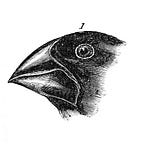Drawing complex curves from circular arcs
This is probably the last in this series as there isn’t much more to say.
In the first part I gave some reasons why it always makes sense, when building, to use a combination of fixed radius circular arcs instead of trying to use actual elliptical curves.
In the second part I showed a technique for drawing these three, five etc.. centre arches that is simple to reproduce with CAD software and that is more flexible than the traditional draughting method.
The technique involves mapping chords and radial lines from a circle to the curve you want to imitate, this doesn’t just work for ellipses but can actually be used for any other complex curve.
Here’s a parabolic arch, structurally this is a useful shape because it can stand up by itself without being embedded in a wall, in practice there isn’t much call for free-standing arches, but there you go:
I drew this as a three point quadratic spline, the rest of this piece assumes that you can already draw these shapes and that all you need to do is convert them to useful circular arcs.
So just like with the ellipse, we need to use a part of a circle that spans the same angle, the parabola starts at 30 degrees from vertical, so we only need a sixth of the circle rather than a full quadrant:
I split it into 10, 25 and 25 degree segments, but you can try whatever angles you like.
As before we map the chords from the circle to the parabola without changing any angles, and then we map the radial lines to the corners between the chords, this gives us the centre points for the circular arcs:
This is a five-centre arch, but with a completely different pattern to the elliptical five-centre arch:
As before, we now have useful circular arcs than can be easily offset for setting out objects that have actual thickness:
..and incidentally we can describe real objects that are simple turned profiles—no NURBS surfaces that can’t actually be built:
That was a parabola, I also promised an ogee — a complex shape where the curve flips from one end to the other, here is one I drew with a six point cubic spline:
The difference here is that we actually have two separate curves that meet at a point of inflection, I needed to find this point of inflection and get perpendicular lines for this point and the end points:
I can use this to set up the angles in the circle that we are going to use for the geometry. Since we have two curves I could do this with two circles, but I’m lazy so I did it all in one:
Note that I’m going to try and draw each of the two curves as a pair of arcs, if this doesn’t work out then you need to switch to three arcs.
Here it is with the chords mapped back to the curve and the radial lines used to find the centre points, this is an eight-centre ogee arch:
Again, the whole reason for doing this is that with circular arcs we can create parallel curves needed for actual building:
Also as before, if we want to drag a profile over this shape, then the circular arcs make it much easier. That’s it, nothing more to say:
